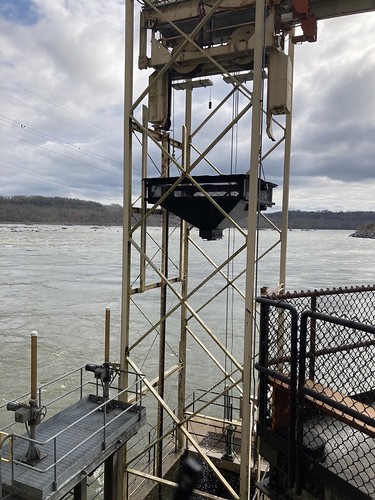The Conowingo Dam employs fish lifts to help migrating fish species navigate the Susquehanna River to their spawning grounds, but the lifts also catch unwelcomed fish – invasive catfish and snakehead. Through a public-private partnership between the Maryland Department of Resources (DNR), dam owner Exelon Corp., the Maryland Department of Agriculture (MDA), and local seafood wholesaler, JJ McDonnell and Co., the invasive fish pulled from the Conowingo are going to local food banks and scientific research, while reducing the number of destructive species in the Chesapeake Bay watershed.
“This initiative serves multiple goals, including controlling invasive fish species by harvesting them to minimize their impacts on the Chesapeake Bay ecosystem and providing protein-rich meals to those in need,” DNR Secretary Jeannie Haddaway-Riccio said. “We will also improve our collection of scientific data, which will help us better manage these invasives in the future.”
The fish lifts were installed on the east and west sides of the Conowingo Dam decades ago to allow critical passage of migratory fish such as American shad and river herring. Exelon works closely with state and federal agencies to help these species access traditional spawning areas above the dam. To help limit the spread of aquatic invasive species, state and federal resource agencies requested that Exelon temporarily halted operation of the east fish lift for the 2021 season. Exelon has been operating a “trap and transport” program on the west fish lift.

Maryland Department of Natural Resources photo
The west lift consists of a series of gates and channels of water, designed specifically to attract and trap fish in a tank-like ‘hopper’ that is lifted into the air and over a sorting tank. The water and fish are then released into the tank and biologists, contracted by Exelon, manually sort the fish, picking out shad and river herring. Those fish are put in holding tanks, then trucked in portable tanks upstream.
The spring spawning migration coincides with the time snakeheads are known to travel longer distances in the watershed. As workers are sorting fish, they also remove invasive fish species — northern snakeheads, blue catfish, and flathead catfish — and hold them in a refrigerated trailer until they are transported offsite by DNR Fishing and Boating Services staff.
“Despite the challenges invasive species have brought, we remain committed to working with DNR on controlling this threat and operating in an environmentally responsible manner, including implementing creative solutions to ensure the safe passage of fish during the spawning season,” Conowingo Dam Plant Manager Dusty McKeown said.

Maryland Department of Natural Resources photo
With large numbers of northern snakeheads drawn from the dam’s west fish lift, DNR coordinated with MDA and local seafood wholesaler JJ McDonnell to process the unwelcomed fish.
“MDA’s seafood marketing program, Maryland’s Best Seafood, continues to market, advertise, and grow our state’s iconic seafood industry,” MDA Secretary Joe Bartenfelder said. “We are happy to be a part of this innovative public-private partnership that helps tackle so many issues at once: controlling populations of invasive species in the watershed, protecting our environment, supporting a local seafood company, and, most importantly, feeding hungry Marylanders.”
The company is donating a significant portion of the meat to charities, including the Maryland Food Bank and Maryland United Way. To date, more than 1,000 pounds of fish have been processed and given to food banks providing healthy meals to Maryland families.
“Our company recognizes the importance of the health and longevity of our native species,” JJ McDonnell Marketing Manager Hollie Snyder said, “We are happy to be a part of this exciting and beneficial project. We are proud to do our part in processing and distributing invasive species from the dam and to provide a healthy protein to those in need in our community at the same time.”
Some of the northern snakehead and flathead catfish are also being used for several research projects that will provide information to help manage these invasives going forward.

